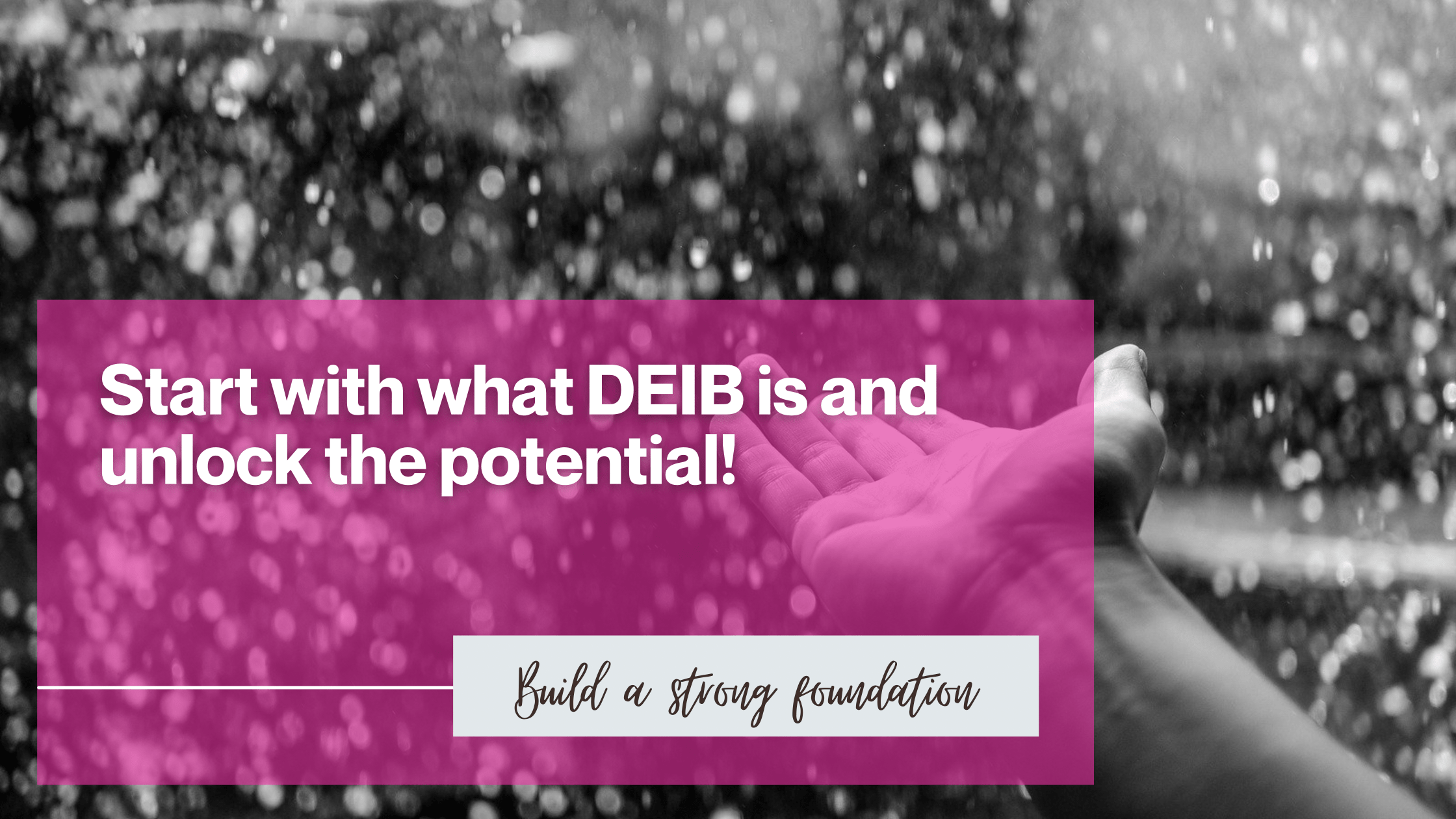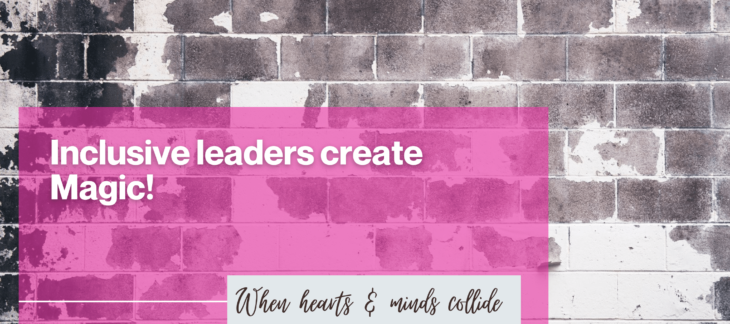More and more companies are working towards building a sense of belonging in the workplace. Every day we wake up to more and more injustices in the world. Those injustices exist in and out of the work place – some are more covert than others. The net result is similar – people feeling like they don’t belong, they aren’t wanted or they are silenced and made to deal. Well, as we progress through all of these adversities, let’s talk more about what each component means. Understanding the basis of DEIB is key to building a more equitable society and workplace. It’s time to not feel like the ONLY and more like ONE OF MANY. And, in the words of Vice President, Kamala Harris, she may be the FIRST, but definitely not the LAST.
Diversity simply means the WHO, it is a demographic landscape, it is about representation.
So, what exactly is diversity? Well, simply put, it means representation. It means how many. It means what percentage. For example: We employ 28% Asian employees. We have promoted 10% women of color in the last 12 months. We have increased our Black employee representation by 2% over the last 2 years.
When I hear we need ‘diversity training’, I wonder ‘do you know what Diversity means? Developing content or workshops for diversity doesn’t really exist. Diversity training isn’t really a topic for a class, it is a component for strategy – how do we attract more people of ‘X’ – it could be people of color, women, veterans, etc. Perhaps, it is a module within a larger class around ‘how to’ hire for diversity.
The question should start with ‘how do we retain our diversity hires?’ or ‘How do we attract more diversity to our company?’ or ‘What is our appetite for change?’ or ‘How do we meet our growth goals?’ Or even something as simple as ‘Are we ready for changing our culture to do what is right?’
Before you start bringing more diversity into your workplace, think about your current practices – are those employees set up for success or at the very least, feel welcome? If not, then start internally. Think about what your policies are, think about your appetite for change, think about what your future needs are. Ask yourselves these questions and answer it honestly – there is no wrong answer. Starting with the truth will allow you to build a DEIB culture that is right for your company. Once you have those strategies, guidelines or mindsets in place, then go after bringing in more diversity.
There is a lot of internal work to do before putting a Diversity, Equity, Inclusion & Belonging strategy in place. Do the work beforehand to plan for a successful initiative. By just jumping into a diversity hiring strategy, you risk ‘checking the box’ versus creating change for the long term. Employees will know the difference between the two. If your employees are your greatest asset, then cherish their thoughts and feelings. They will work harder for you if they feel like you are making a true effort.
Diversity isn’t just about gender, orientation or race – over the years, the definition of diversity has changed. Diversity now includes experience, expertise, age, abilities, sexual orientation, culture, etc. The definition keeps broadening to include more than just gender or race.
So, when you hear ‘we need diversity training’, ask what are you trying to accomplish? And, then follow up with a simple ‘Why?’. The why is very important – to your existing employees, to future employees and to past employees. Some companies are doing to it because it’s the current trend. Some companies are doing it because they know it is the right thing to do. Some companies do it because they feel it to their core – their core-values, that is. The latter is where actual change happens. When you have the business aligned to the core values which are then aligned to the hearts & minds, we will see real change and you will be on your way to Diversity, Equity, Inclusion, Belonging and Justice. That is the ultimate goal – creating a sense of belonging – ‘diversity’ alone won’t win the long game. And, it will keep evolving as our world changes.
Inclusion is an action – the actions that make people feel like they are able to attend, speak, share ideas – that they are welcome.
We hear about inclusion being asked to dance, well, it is more than just being asked to dance. It is about being given space on the dancefloor.
Women feel this on a regular basis – they are in the meeting yet when they speak, they are interrupted or spoken over. How would that lead to inclusion? Being in the meeting and then silenced. Will that actually make them want to share their ideas or provide their feedback? Not really. Do you know how many times I have been silenced just in the last 12 months? Doesn’t matter if we are physically present or virtual – it’s the same – talked over or ignored.
Inclusion happens when people are given the opportunity to speak, to share their ideas without feeling rushed or hushed. The action is where someone brings the conversation back to the person being interrupted – having allies is one of the easiest ways for marginalized people to share and given space to speak. Another action of inclusion would be inviting a person to speak – ‘Sally shared a great idea for the next Leadership Summit. Sally, would you please tell the team what you told me yesterday?’ Now, Sally feels like she can share her idea and hopefully, be heard. Plus, she has an ally in the room that will give her the opportunity to share her idea.
Diversity means the marginalized groups are represented or present. Inclusion means those marginalized people have a stage to share their ideas. So, how do we know if those ideas are actually heard?
Belonging means people feel like they are valued and are welcome to share their ideas. Belonging is when people are the ONLY’s and accepted for themselves.
When a person feels like they belong, they feel they can bring their authentic selves to the work place and be heard. Someone may be funny and goofy in private, but feel like they have to be serious in the work place. That is an example of how people bring only a part of themselves to the work place. Imagine if that serious person could insert their humor or whimsical side to their work? Imagine how it would feel for them. No more stifling, no more hiding, no more walking on egg shells or worrying about being misunderstood or misread. Constantly worrying about what others think or being nervous about sharing a perspective gets tiring – trust me.
So, if diversity is representation, and inclusion is action, then belonging is a feeling. The way you know if people feel like they belong, is by asking them! Whether it is in a one-on-one or through an employee engagement survey, ask them. If they feel like they belong, they will be honest. If they don’t, then they will shy away from answering. How you make people feel is where belonging gets tricky. And, so words and actions matter – build up their confidence to share.
Yes, some comes from within, but much will come from the culture and leadership. If you have a leader that contradicts culture, then you won’t make people feel like they belong. Make sure you have done the upfront work internally to make people feel like they belong. The way to know if you have a culture of belonging is by asking people – it is a feeling, not a tangible fact or statistic.
What bridges the gap between diversity, inclusion and belonging is Equity.
Equity simply means providing the right tools to the right people for them to be successful and thrive. You can have 25 people in the same role, and each is an independent person with specific needs. One may have been at the company for X years while someone else in the same role may come from another industry – they each have different needs. You may have a Learning & Development curriculum in place that is audio and video only, how will your employee with a hearing impairment be able to learn? Basically, you have to be able to provide the right tools to your employees to ensure their individual success. This is where people mistake Equality for Equity. Equality basically says here are the tools, you figure it out.
In order to reach that sense of belonging that employees want; companies and leaders need to be able to provide the tools for success. Even leaders need to lead each individual on the team differently – some may need more empathy and others may need more direct feedback – there is no one-way to lead. Situational Leadership is an example of creating equity within the team.
A truly successful DEIB initiative has to be felt, it has to be part of the DNA of a company – it will impact every single thing they do. It will not be an afterthought, a side project, a siloed initiative. It will be measured in everything much like revenue is measured. It will be a part of every project team, it will be part of every HR policy, every Marketing collateral, every social media post, every training workshop, every core value and be engrained from the beginning – not just the new hire orientation, but from the interview stage – it will be part of the interview process, it will be part of the hiring strategy, it will be part of performance management, it will be included in annual objective setting, it will be the language and tone we use to speak to each other, it will be the way we respect one another and advocate for each other.
DEIB will be woven into everything single thing a company does. That is how we create change – that is how we make employees feel like they not only were invited to the dance, but were asked what music they wanted to dance to! That is how DEIB will be part of a company’s culture and ethos!
To learn more about how YOU can either start or continue the journey to culture acceptance and belonging, reach out and let’s talk.



